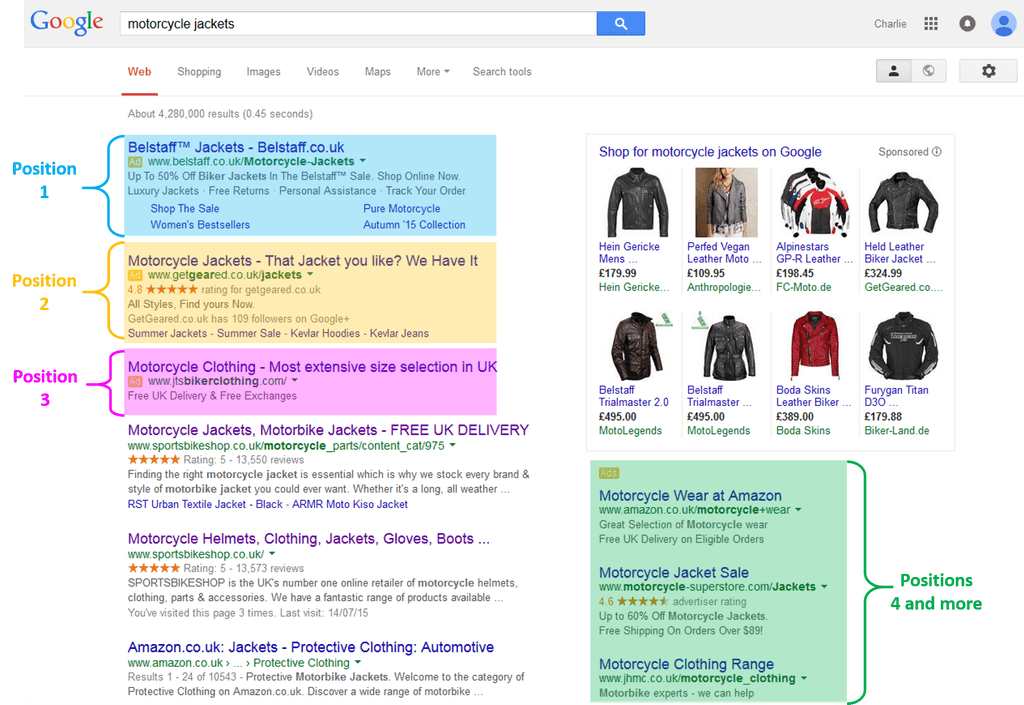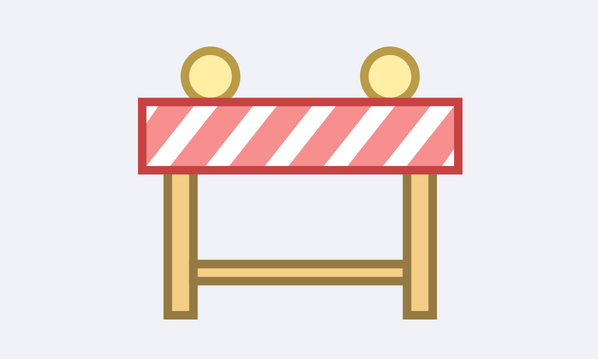When you advertise using Google AdWords, you enter an auction and your advert could end up in any paid position, on any page, where there is an available slot. The positions are labelled; 1 is the first position and this is situated below the search bar normally – you’ll know which one is an ad because it’s got a little yellow ad logo next to it. The top three slots are generally below the search bar and above the organic or free listings. Slots four and more (as I like to call them) are usually found on the right hand side, next to the organic listings. There are often also slots at the bottom of the page.

The position in which your ad appears depends on your bid, combined with your quality score. It is also influenced by the expected impact of your ad-extensions; the impact of ad extensions is included in your quality score, but it is also looked at as a separate factor outside your quality score. (Think of it like a tie breaker; if two advertisers have the same bid and quality score and are competing over third, it’s likely that the advert with the ad extension will win third place as it has more benefit to the end user.)
So, for a moment, forget everyone else in the auction and forget ad rank and quality score – let’s pretend that they have no impact.
- Your CPC is going to increase as your position improves.
- You are likely to get a higher CTR in position 1 than in position 2 or 3*
- You are likely to get a higher CTR in position 3 than position 4*
- Moving from position 3 to 2 is not likely to result in a higher CTR*
- Moving from position 5 to position 4 is not likely to result in a higher CTR *
- You only pay when someone clicks, that is the nature of PPC
So, lower CPCs result in fewer clicks (a poorer CTR) and higher CPCs result in more clicks (a higher CTR). The CTR and the expected CTR will affect your quality score, which in turn will affect your CPC.
That said, cheaper clicks do mean more overall clicks; if position 4 is costing you £1 a click and position 3 is costing you £2 a click you can get twice as many clicks for your budget in position 4.
What we’re looking for is that sweet spot, where the higher CTR has a positive impact on your QS and the CPC is already optimal.
The average position has more of an impact on the CTRs of SMEs than large and well-known companies. It also has less impact on brand terms for the very same reason; the data shows that the recognition of your name (if it’s recognised) is enough to trump the ad positions. The sweet spot for large brand names or recognised brand terms is a slightly lower ad position – you actually don’t need to be in the top three spots because the impact on your CTR and consequently your QS is negligible, so you may as well pay a lower CPC and appear lower down the page.
For smaller, less well-known businesses and non-brand terms though, the perfect position is hard to find. Some say you should aim for low positions, paying a much lower CPC because the CTR impact on your campaign is not worth the higher CPCs. Some say bidding higher and appearing in positions 4-2 is the most beneficial spot because that’s where the perfect balance lies. Few people say aim for spot 1, it’s just too pricey to be worthwhile.
The truth is that you should be making your own decision based on your conversion measures and looking at your costs per conversion. These will be completely personal to you and I can honestly find only one study to cite which definitively takes one stance over another and that’s Hal Varian’s blog (so worth paying attention to), but it’s from 2009. Hal says; “We have used a statistical model (…) and found that, on average, there is very little variation in conversion rates by position for the same ad.”
While I hope this blog was informative, it’s also a shout out to the community for some help! Do you have a study that links conversion rates to average position? It would be great to hear from you!
[bctt tweet=”Find your perfect Google AdWords advertising position”]
* http://www.gsb.stanford.edu/insights/sridhar-narayanan-google-search-ads-higher-isnt-always-better





